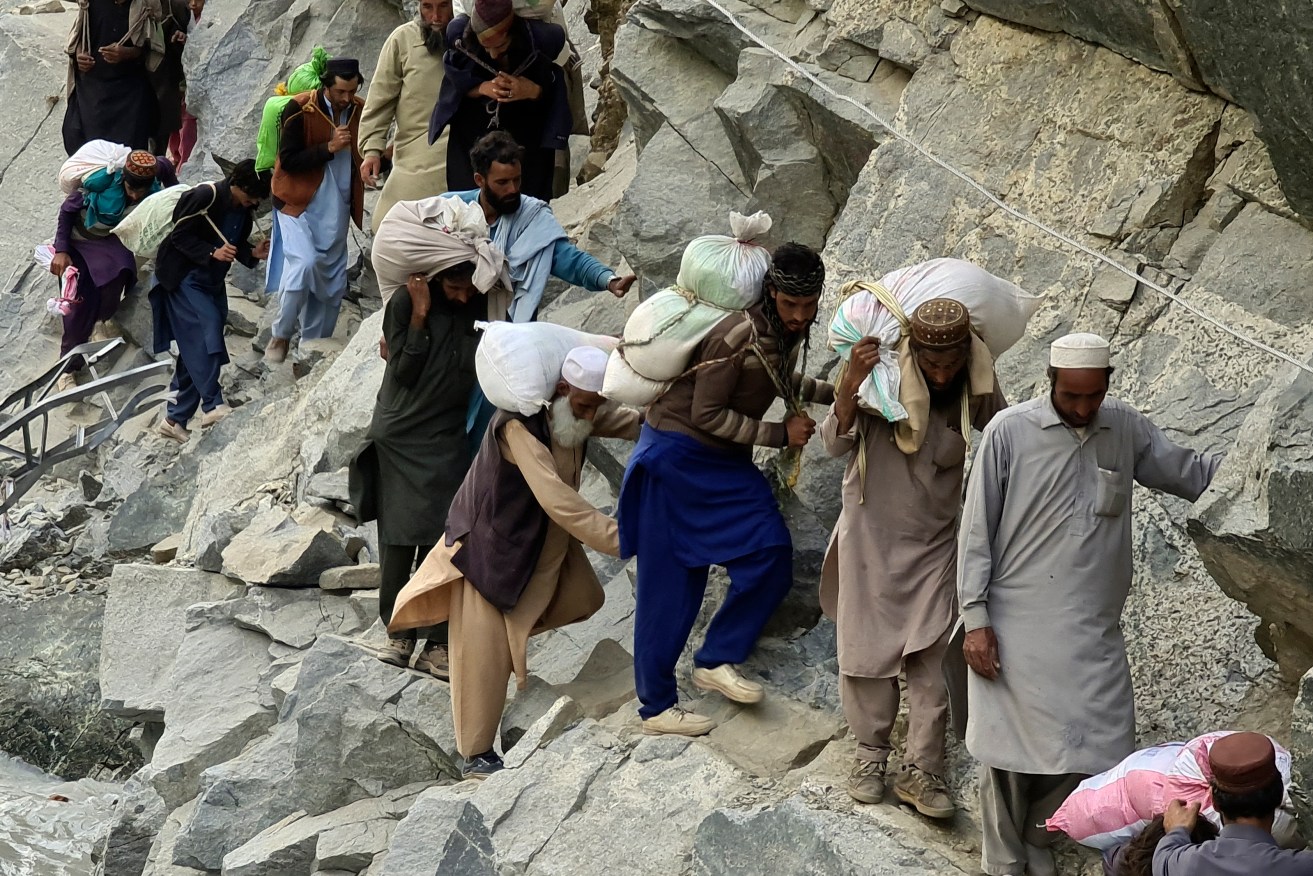Pakistan floods: How 100,000 people have lost their homes in order to save millions
Authorities in flood-hit Pakistan have breached the country’s largest freshwater lake, displacing up to 100,000 people from their homes but saving more densely populated areas from gathering flood water.

Local residents cross a portion of road destroyed by floodwaters in Kalam Valley in northern Pakistan. Officials warned Sunday that more flooding was expected as Lake Manchar in southern Pakistan swelled from monsoon rains that began in mid-June and have killed nearly 1,300 people. (AP Photo/Sherin Zada)
Record monsoon rains and melting glaciers in Pakistan’s northern mountains have brought floods that have affected 33 million people and killed at least 1290, including 453 children.
Manchar Lake, which is used for water storage, had already reached dangerous levels and the increased pressure posed a threat to surrounding areas in southern Sindh province, Sindh Irrigation Minister Jam Khan Shoro said on Sunday.
He said about 100,000 people would be affected by the breach but it would help save more populated clusters and reduce water levels in other harder-hit areas.
“By inflicting the breach we have tried to save Sehwan town. Water levels on Johi and Mehar towns in Dadu district would be reduced by this breach in the lake,” Shoro told Reuters.
It was not clear how many of the 100,000 asked to leave their homes would do so. Some displaced by the floods claim shelters are crowded, while others are reluctant to leave their possessions.
Southern Pakistan has had to contend with historic rainfall and increased flooding caused by a surge of water down the Indus river.
The country received 390.7 millimetres of rainfall in the quarter through August – nearly three times the 30-year average. Sindh province, with a population of 50 million, was hardest hit, receiving almost five times more rain than the 30-year average.
The southern parts of the country have witnessed swelling river waters flowing from the north. Pakistan’s limited dams and reservoirs are already overflowing and cannot be used to stop downstream flows.
Tarbela dam in the northwest, has been at capacity for weeks, according to National Disaster Management Authority data.
Authorities also prepared for more rain in the north in the next few days.
The overnight death toll from the floods increased by 25, including 12 children.
The United Nations children’s agency UNICEF said there was a risk of “many more” child deaths from disease after floods.












